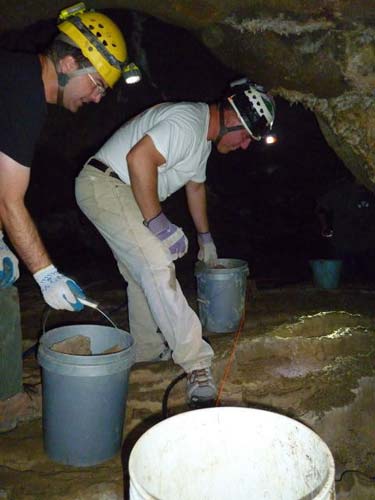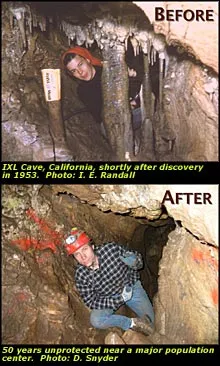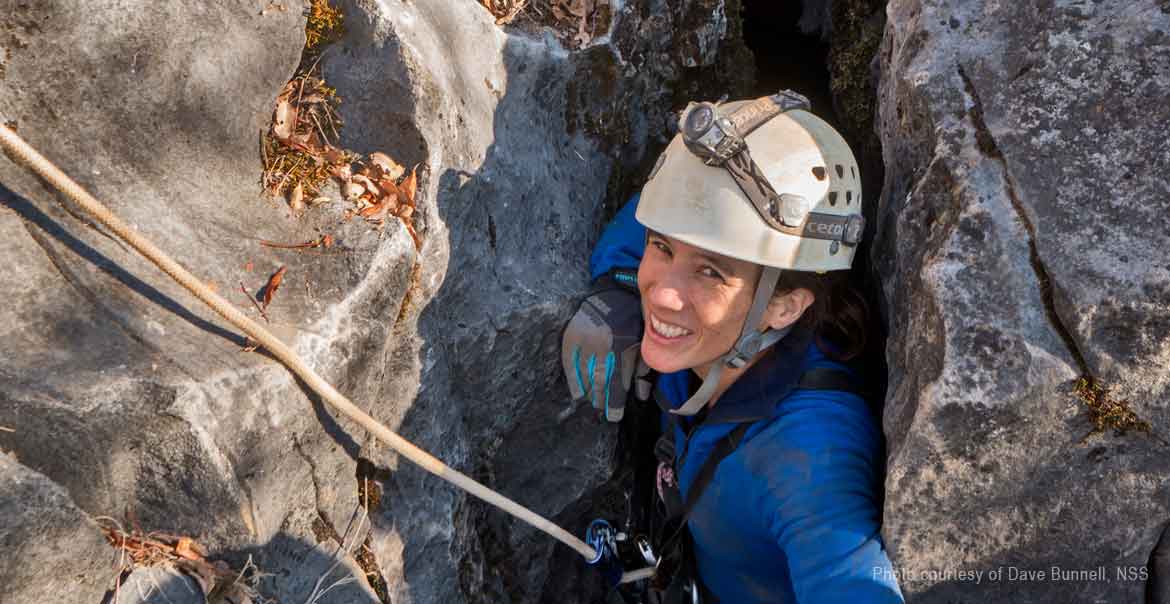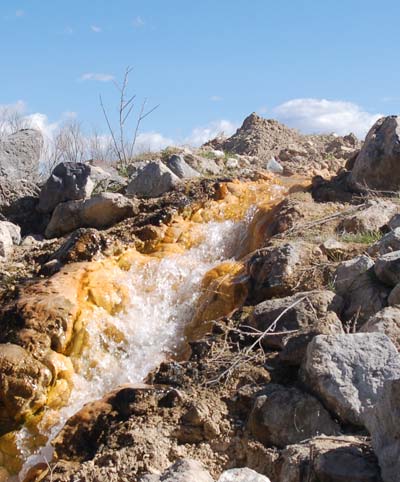

WCC cavers working on a clean-up of a threatened cave in Sequoia-Kings Canyon National Park. Photo by Kelley Prebil.
The Western Cave Conservancy started with an idea: around 1994, Dan Syder suggested that the Mother Lode Grotto should start a cave conservancy in order to acquire a notable cave, Black Chasm, that was then available. That plan didn't materialize and Black Chasm became a show cave under private management. The cave wasn't acquired but its availability did provide the germ of a plan.
Fast forward a few years, to 2001 and the dot-com boom: Martin Haye received a windfall from the sale of a company he partially owned, and wanted to donate a nice chunk of it towards buying Rippled Cave. Originally, the idea was to have the Mother Lode Grotto do the purchase, but it didn't have the 501(c)(3) status needed for the donation to be tax-deductible.
As a result, a group of California cavers got together in 2002 to form the Western Cave Conservancy as an all-volunteer nonprofit, with an inaugural party at the 2003 NSS convention in Porterville, CA. We didn't have any caves yet, but we had a lot of possibilities...
From 2003 to 2005, a lot of research was done into possible cave acquisitions (mostly in California), but for a variety of reasons, none panned out in the short term. Keep in mind that in the West, a lot of karst landscape is on public land, rather than private. In keeping with our mission of "securing responsible access to threatened caves," this often means working with other land-management agencies to secure long-term access, rather than directly acquiring property.
Finally, in 2005, another potential buyer for Rippled Cave appeared, leading to the real possibility of losing access to the cave; this was the forcing factor that led the WCC to finally make its first cave purchase.
Also in 2005, the WCC was approached by cavers from the Diablo Grotto about the possibility of reopening and managing Windeler Cave, which had been sealed for years to prevent vandalism. This cave is located on USFS land, so a purchase was out of the question; after some negotiation, the WCC entered into an MOU to manage the cave for the Forest Service. (It took several years of work to reopen and re-gate the cave in a manner that ensured its safety; regular caver trips to this exquisitely decorated cave finally resumed in 2010.)

IXL Cave in California has suffered extensive damage over the decades.
Starting around 2004, the WCC got involved with trying to protect Avalanche Cave, a small but unique alpine cave in the northern Sierra Nevada. Many years of patient work with the Sierra Pacific Lumber Company and the USFS - plus some old-fashioned good luck - resulted in the Tahoe NF acquiring the land containing this cave (and several others) in 2016; this led to an official declaration by the USFS in 2018 that the cave would be freely available for responsible visitation.
Meanwhile, in 2010, the sale of a large tract of land near Davenport, CA to the Peninsula Open Space Trust and Sempervirens Fund opened the possibility of making legal access to some long-forbidden caves possible again. This took years of negotiation, but in 2014 the WCC signed an MOU with these organizations to allow limited visitation for research and mapping purposes; finally, in 2019, we were able to further expand this MOU to allow for recreational trips to these caves for local cavers.
In 2014, the WCC signed a lease for property containing Cave of the Catacombs, a small but historically interesting cave near Mountain Ranch, CA. In early 2020, we were able to purchase outright the bulk of this property, and continue to maintain a lease on the remaining area.
Shortly after acquiring Cave of the Catacombs, the WCC learned of another major karst property that was available for purchase: over 150 acres of karst and caves near Volcano, CA. Thanks to incredibly generous donations from cavers, we were able to successfully purchase this tract.

The Western Cave Conservancy has been protecting access to caves for cavers since 2002. Image courtesy of Dave Bunnell, Good Earth Graphics.
The official event schedule for the 2025 NCKMS has now been updated. Please check our schedule page or download a PDF to your mobile device.

The Karst Waters Institute is a 501(c)3 nonprofit institution whose mission is to improve the fundamental understanding of karst water systems for professionals and the public.
The institute works to engage professionals in small conferences and workshops to advance karst science; increase recognition and publication of karst science; foster development of karst professionals; and to communicate and disseminate information to the public.
![]() Partly cloudy, with a low around 20. North northwest wind 5 to 10 mph.
Partly cloudy, with a low around 20. North northwest wind 5 to 10 mph.
![]() Partly sunny. High near 47, with temperatures falling to around 40 in the afternoon. North northwest wind 5 to 10 mph.
Partly sunny. High near 47, with temperatures falling to around 40 in the afternoon. North northwest wind 5 to 10 mph.
![]() Mostly cloudy, with a low around 26. West wind 5 to 15 mph.
Mostly cloudy, with a low around 26. West wind 5 to 15 mph.

Monte Neva Hot Springs is one of the largest effluences in White Pine County. Heavily mineralized, this spring serves agricultural purposes in the valley. Located on private property, we hope to include this site on our hydrology field trip.

WCC Ball Cap
Wearing a ball cap? Oh, that's a whole vibe. It's like saying, "I'm strong, but I'm not here for your speleo-approval." It's the kind of quiet power that doesn't scream for attention, but when it walks into the room, everyone knows it's the real deal. No need to flaunt or flex when you've got that kind of effortless strength, right?
Yet, while being grounded and focused on what truly matters, you can still shine at your next grotto meeting by declaring your subtle support of the Western Cave Conservancy!
